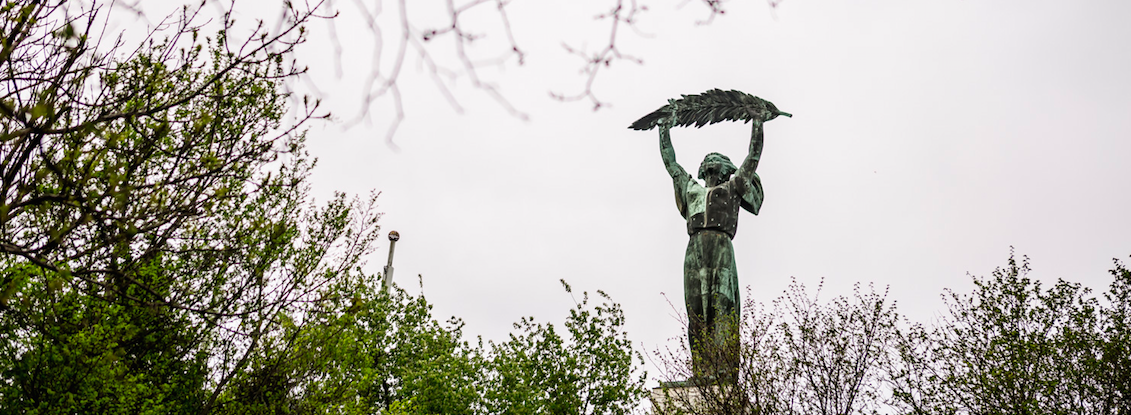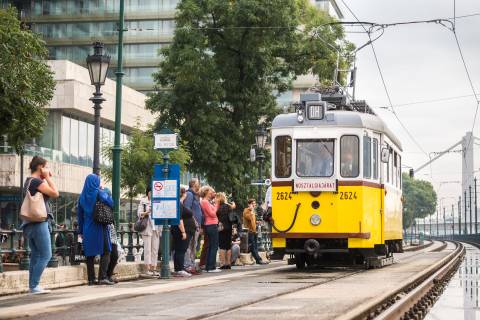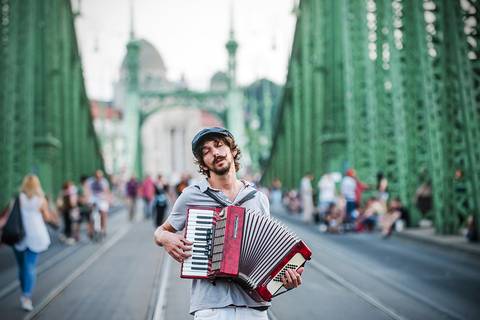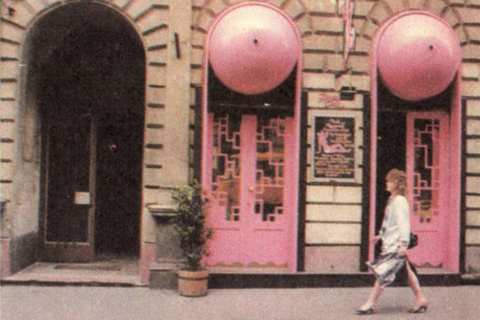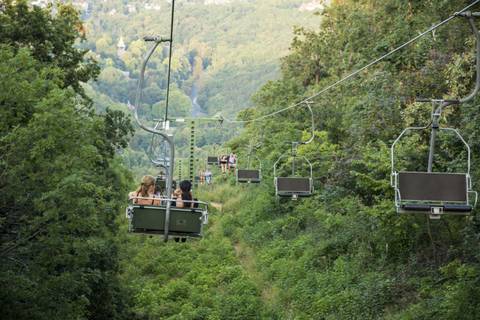For seven decades now, Budapest’s most distinctive skyline feature is the Liberation Monument standing tall above Gellért Hill, a Soviet-installed metal statue looking eastward as a tribute to the Red Army’s triumph over Hungary’s Nazi occupiers during World War II. Because of this politically fraught past, several movements attempted to remove this feminine figure over the years, but it has persevered to become an iconic symbol of Hungary’s capital. Visible from numerous sites citywide, the Liberation Monument is now a cherished emblem of freedom that celebrates its 70th birthday this month.
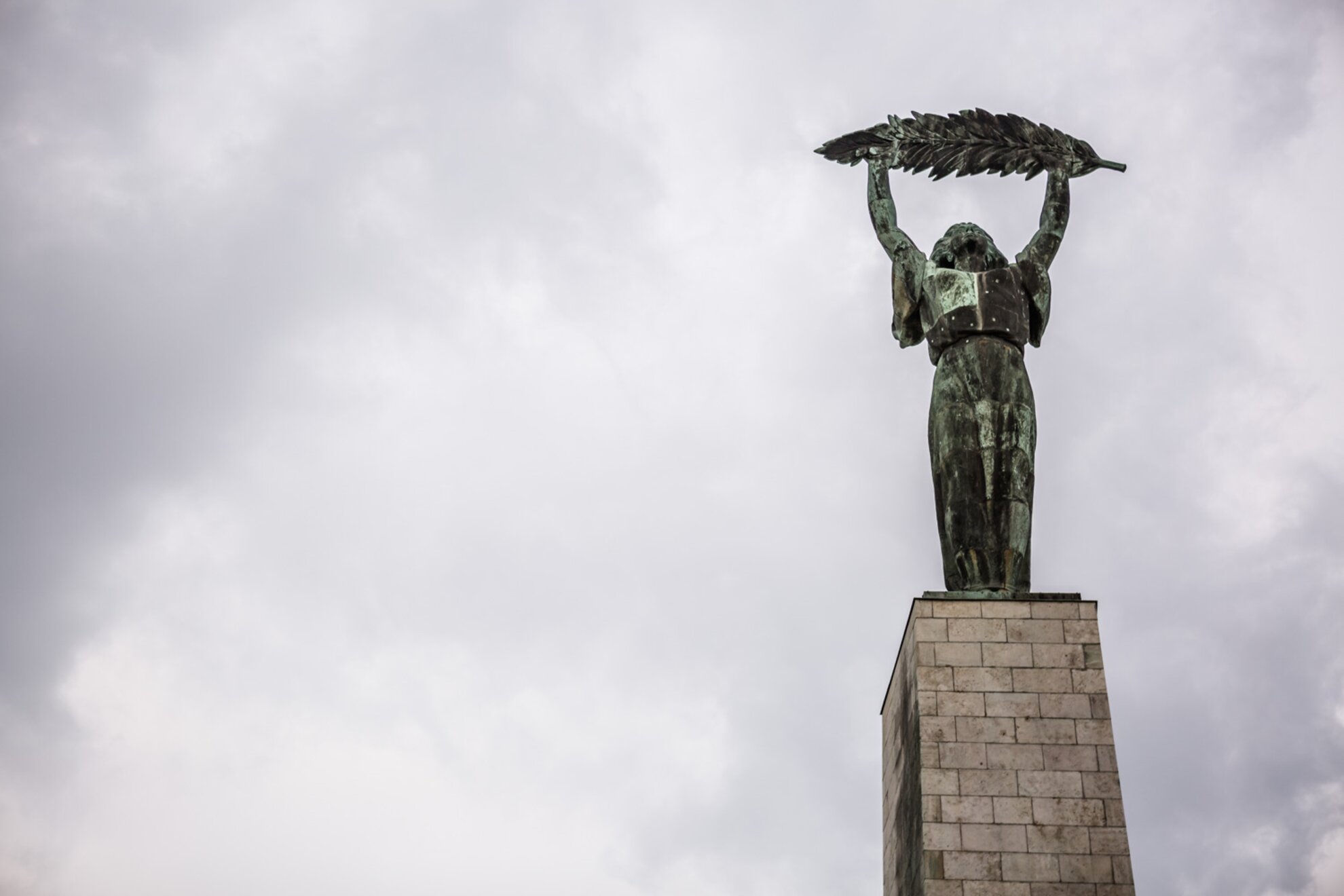
The decision to construct Budapest’s Liberation Monument was made even before World War II ended. Following the victory of the Red Army over the German forces in Hungary, the erection of the Liberation Monument was sanctioned by law to “perpetuate the memory of Soviet soldiers fallen in the liberation of the capital city of Budapest”, and it was built under the pressure of Soviet marshals in record time. Now also known as Budapest’s Liberty Statue, the sculpture was created by Zsigmond Strobl Kisfaludi 70 years ago, and was unveiled on April 4, 1947. On the second anniversary of the country’s liberation, the Red Army, the Hungarian Defense Forces, and the police all held a parade at the initiation ceremony of the memorial. The prime minister, the president of the republic, the mayor, the members of the government, the leaders of the Soviet Army, the armed forces, the Hungarian parties, and members of many prominent institutions were present.

Weapons were still firing during the Siege of Budapest when, in January of 1945, the Budapest National Committee decided to erect the statue. The ink hadn’t even dried on the regulation when Soviet Marshal Voroshilov selected the sculptor. The choice of location and the building process were characterized by the same soldierly tempo. In September, the National Assembly enacted a bill mandaing the statue’s erection. Although the body responsible for the public investment was the Ministry of Defense, and later the Ministry of Construction and Public Works, the Red Marshal kept his hand on the project the whole time. Voroshilov seated consultants next to the decision makers, thus eventually doubling the size of the composition and changing its location from the Horváth Garden to the top of the 235-meter-high Gellért Hill, at the southeast bastion of the Citadel. The expenses were naturally paid for by the Hungarian taxpayers.

The original sculpture in 1947 featured multiple figures. The remaining 14-meter-tall (40-meter-tall with the pedestal) bronze lady is the only one still standing – holding a palm frond aloft, with the wind blowing her hair, and looking towards the faraway Soviet Union to the east. (Fun fact: the sculptor spotted the model for the statue on the street, and after convincing her to cooperate, she held up a palm leaf for 20-minute periods for weeks.) Originally, three six-meter-tall bronze Soviet soldiers stood in front of the female figure, and a three-meter-tall stone statue stood behind her. The stone soldier was destroyed during Hungary’s 1956Revolution, but was later re-sculpted and restored. (After the regime change, this statue was relocated to Memento Park.) The figures of a dragon slayer and a torch-bearer stand on the sides of the statue to this day. The original inscription read “To the memory of the liberating Soviet heroes [erected by] the grateful Hungarian people [in] 1945”.

The decision of whether to keep or remove the memorial was a recurring question until 1989. The statue, nicknamed the “bottle opener”, became such a prominent feature of Budapest's cityscape over 40 years that its demolition was canceled due to public opposition. Fine artist Tamás Szentjóby stirred up controversy again when in June of 1992, he covered the statue with white parachute silk as part of his project Statue of Liberty’s Soul, remembering how the female figure loomed over the city as a bad omen of communism at the time of the Soviet troops’ withdrawal. In 1993, the additional statues were relocated and the inscription was modified to read, "To the memory of those all who sacrificed their lives for the independence, freedom, and prosperity of Hungary".Regardless of its past, the Liberation Monument remains an instantly recognizable symbol of Budapest, and we are glad to have it stand proudly above the city for 70 years now. Happy birthday to Budapest’s own Lady Liberty!
